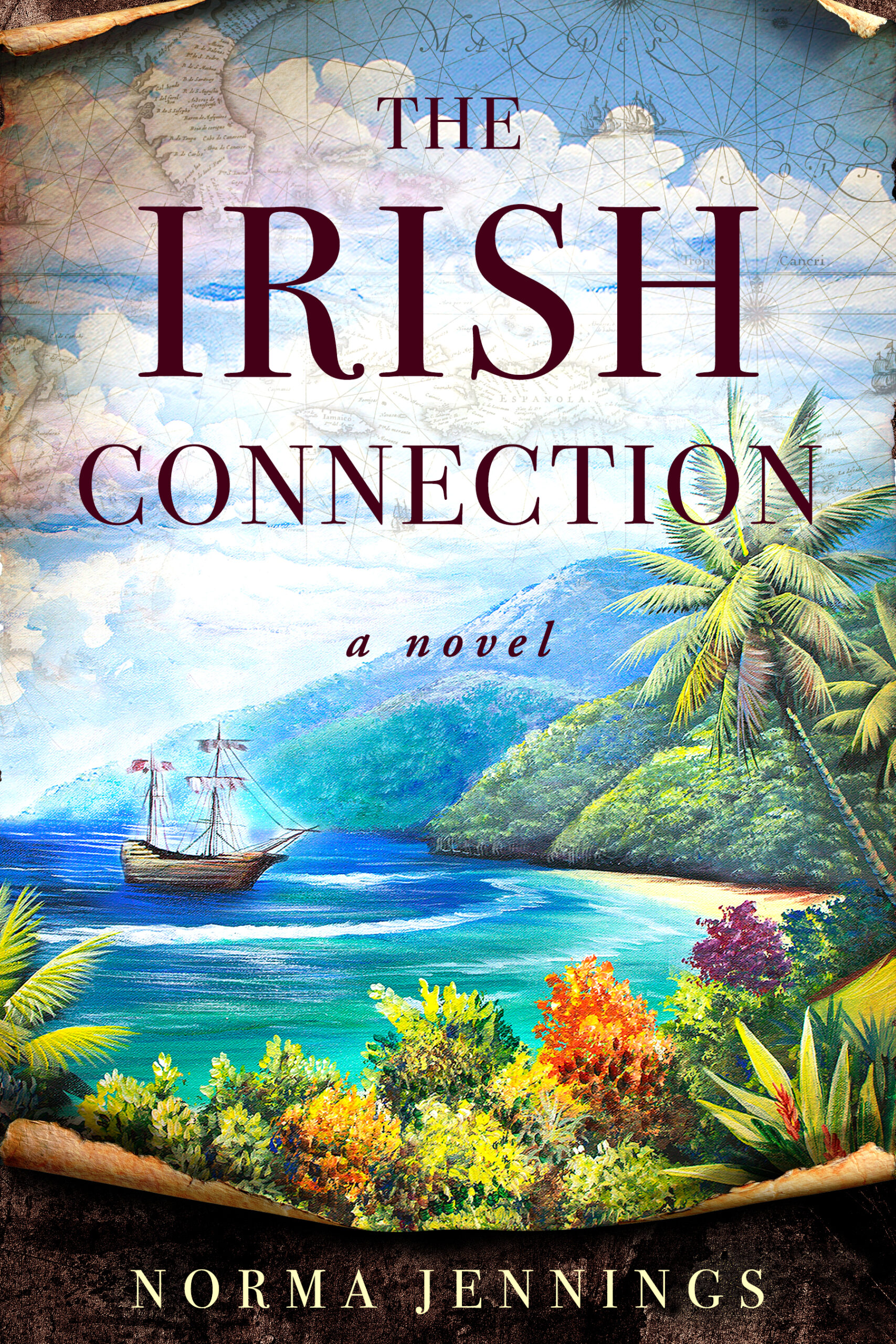The Irish Connection by Norma Jennings
An Irish potato farmer flees the famine for Jamaica where he strives to abolish slavery
The Irish Connection, latest historical fiction by award-winning novelist Norma Jennings, brings together two historic events of the mid-1800s—Ireland’s potato famine and Jamaica’s convoluted and brutal fight to abolish slavery—with a highly sympathetic protagonist, visceral storytelling, and a well-researched grounding in historical events and figures. Jennings does not spare the gritty details of life as a starving Irish tenant farmer or a powerless African slave in Jamaica, making for a compelling read.
While the novel’s primary setting is Jamaica, its first fifty pages take place in 1846 in County Cook, Ireland. Amidst the worst of the potato famine and a grim world of pain, protagonist Sean O’Sullivan reveals his struggle to survive with the very first sentence in the novel. “I burst through the front door and Mammy laid quivering on one side of the straw bed, her body a limp heap of bones.” Son of Irish tenant farmers, twenty-year-old Sean and his best friend Brian are strong enough to dole out soup at the local soup kitchen, where starving locals line up for a mile to get their cup of soup every three days. The other days, Sean and Brian transport boilers of soup on horse-carts to out-of-the-way places, their journey often slowed by having to bury dead bodies along the way. As things only get worse with British landowners burning the houses of tenant farmers who cannot pay rent, the two get passage on a boat to Jamaica, then “sugar capital of the world,” and reluctantly leave Ireland behind.
Irish workers were brought to the Caribbean islands by English landowners as early as the mid-1600s to work on sugarcane plantations. It is no different as of the mid-1800s as the rich English minority in Jamaica recruits new Irish immigrants to help them stay in power. Within hours of arriving Sean is hired to be a plantation overseer and faces a heart-wrenching crisis in his first few days of work. “The slave woman pleaded as she… stared into my eyes. Something must have been terribly wrong; slaves never looked white men in the eyes.”
UPLIFTING AND RIVETING
Unlike their counterparts in the Western hemisphere, a group of Black slaves living in Jamaica had won their freedom in a 1740 treaty with the British government after decades of struggle. As of the mid-1800s these free Blacks—called Maroons from the Spanish word Cimarron, meaning wild or unruly—are thriving unfettered in the mountains of Jamaica, living a mantra of “freedom or death, no other option.” Sean is fascinated by their strength and vibrance. “Never had I seen so many African Jamaicans and they weren’t working the fields…women of all sizes, dressed in big cotton frocks, most with colorful scares around their heads… most of the men bare-footed, wearing short-sleeved cotton shirts and knee shorts or old pants that hung mid-calf. They chatted away in patois, laughed, and gestured with their hands as beads of sweat gathered on their foreheads. It was a magical taste of local life.”
Intensely spiritual, Sean cannot abide the cruelty of the British plantocracy, especially with having just been a victim of the same British cruelty in Ireland. “Opulence amidst cruelty and suffering, I thought as my mind flashed back to the land owners meeting in Ireland where the Brits said it was our fault we were starving to death…‘No one told them to breed like rabbits.’” He starts by befriending the Maroons, particularly one Bene Olumbo. On their first meeting Bene, bare-chested with his back free from whip marks, wears burlap from waist to just above the knees, and most importantly “stared like he saw me as an equal.” Bene’s beautiful sister Asha speaks perfect English with a slight accent and her bright hazel eyes get Sean’s attention. With their help and that of the Obeah women, who use African spellcasting and healing traditions to cure the sick and predict the future, Sean devotes himself to bettering the lives of his Black slaves.
Within its vivid context of historical fiction comes Jenning’s equally vivid focus on settings, told as a juxtaposition of Sean’s intense appreciation of the paradise that is Jamaica and his staunch moral code. “The late December morning was bright and cool…Bright yellow colors of ripened sugar cane and deep green Indian corn blessed my eyes. An opulent pasture of guinea grass also adorned the landscape. Lines of coconut and mango trees surrounded dozens of slave huts. Beauty and strife. They just shouldn’t go together.”
The Irish Connection is uplifting and riveting historical fiction that infuses vivid life to a long-ago world more intertwined than many of us probably knew.




